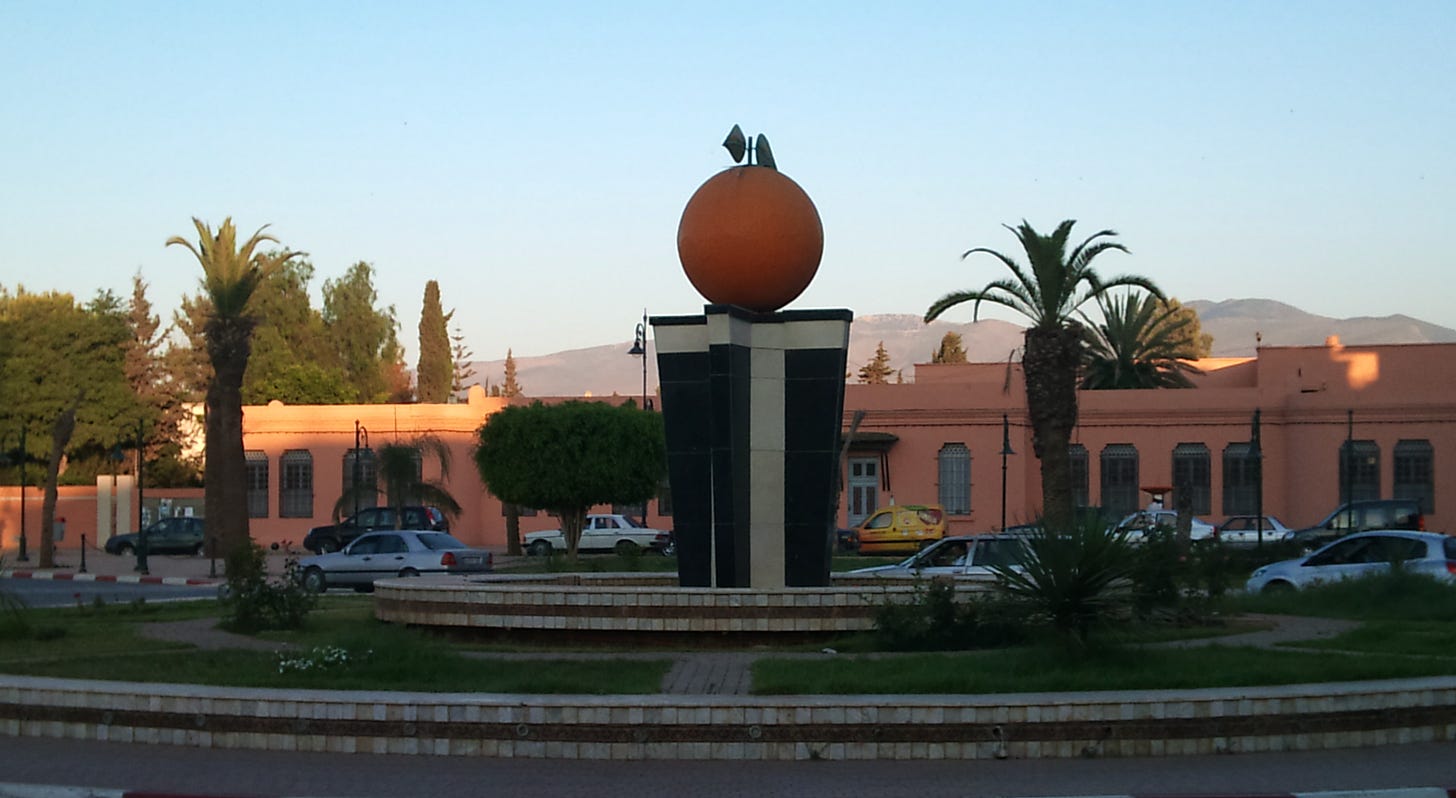The Marvelous Mandarins of Morocco
It is Mandarin orange season in Morocco.
In early January until late February, truckloads of this luscious fruit are seen on the autoroutes and national byways. Men are selling them from the back of pickup trucks or push carts. Old wooden fruit crates are stacked up in each little grocery store. It is winter now, but the manadarins and other citrus fruit arrive from various regions of Morocco.
When they are in season, it is difficult not to buy a few kilos and gobble them up. Believe me, you can’t eat just one. They are so, so sweet, dulcina.
Morocco is known globally as a major exporter of this lovely fruit which orginated in Southeast Asia. The cultivation of mandarins, or Citrus reticulata, has contributed to Morocco's position in the global citrus market. The export of citrus fruits, including lemons, grapefruit and navel oranges, has been an important source of revenue for Moroccan farmers and the country's economy.
I always thought of oranges coming from tropical climates like Florida, but Morocco’s diverse climate, with its warm temperatures and suitable soil conditions, provides an ideal environment for citrus cultivation.
The city of Berkane, near the border of Algeria, is considered the capital of the citrus fruit industry in Morocco. The city lies in the Oujda province and close to the Mediterrean Sea. I have been to Oujda, but have not had the chance to venture into the mostly Berber regions of Berkane. I hear the clementines, which are smaller than mandarins, are harvested and shipped from the nearby seaports.

There are orange trees in cities I have lived in, Rabat and Casablanca. Sometimes I would walk through the streets and suddenly find myself engulf in the fragrance of orange blossoms. This amazingly beautiful smell will put a smile on your face. However, the uncultivated fruit are very bitter and fall to the ground and turn black.
The essence of orange, called eau de fleur d’oranger, is used in perfumes and desserts as well.
Moroccan exporters are experiencing challenges in shipping their products to the North American market “mainly because of issues in securing reservations on conventional ships,” according to a US Department of Agriculture report. American imports of Moroccan mandarins dropped 25 percent to 82,000MT from 109,000MT.
Last year, Morocco exported 73,000 metric tons of Mandarins to Canada.
For the 2023/2024 season, industry experts predict that mandarin/tangerine production will reach 950,000 metric tons.
Morocco has been cultivating citrus fruits for decades and continues to expand its production.
For some reason, I want to write about Morocco’s continual development and emergence as an industrial nation. It is a capitalist nation of striving, young entrepreneurs and industrialists whose innovation should be recognised. I have enjoyed a front row seat in watching this nation emerge for the past seven years and now I will share what I see.
Thank you for reading my substack posts.






